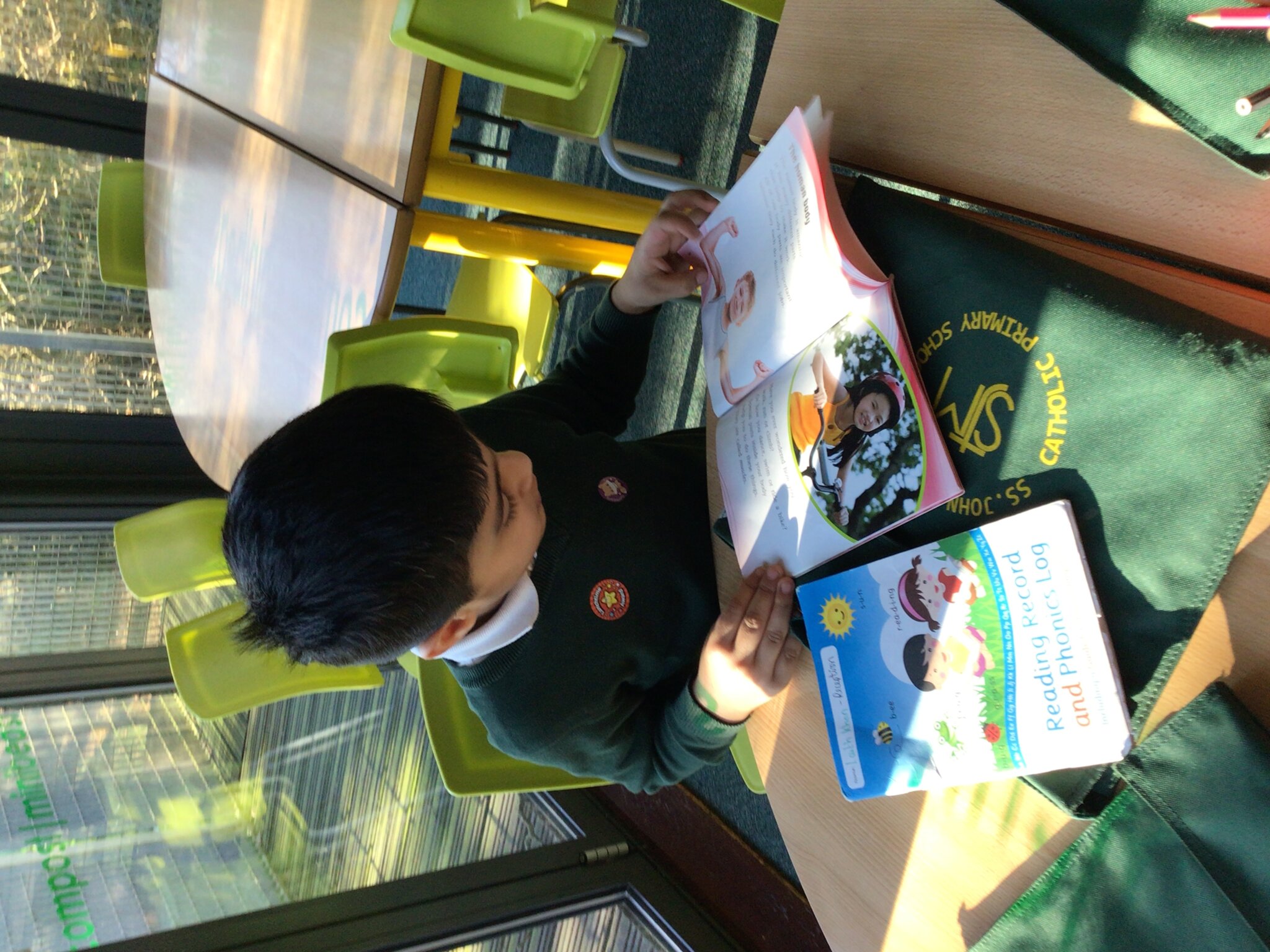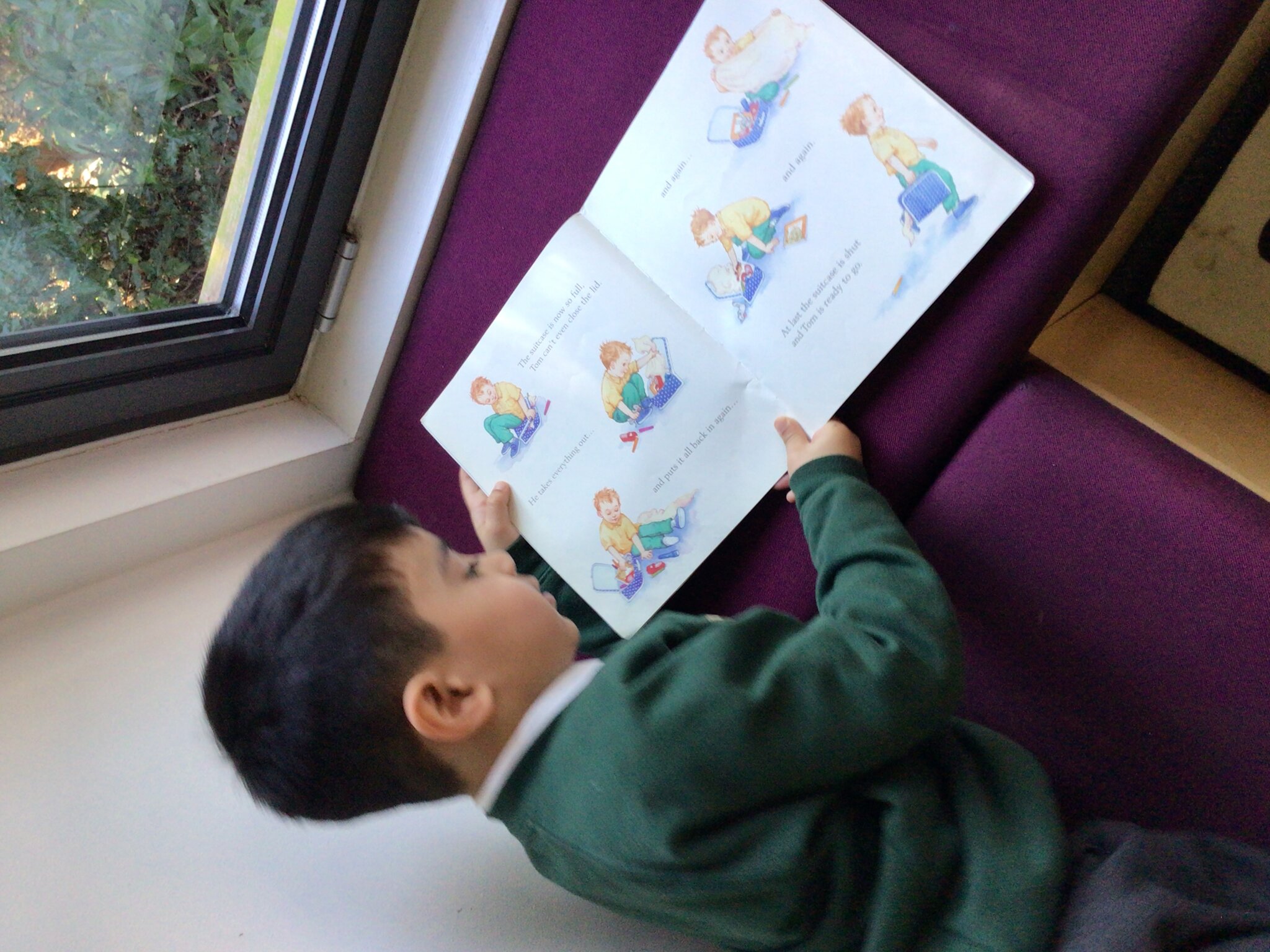Reading
Reading is at the heart of everything we do at St. John and Monica School. We believe that developing a love of reading and the skills to read fluently is essential for success in all areas of learning. Children are encouraged to read widely, from a range of fiction and non-fiction texts, and to develop their comprehension and critical thinking skills. We are committed to ensuring that every child becomes a confident, fluent reader with a love for reading nurtured from the beginning of their education. We prioritise early reading to ensure children develop strong phonics skills and build a foundation for reading success across the curriculum.

Shared Read/Model Approach
In addition to supporting reading at home, we also follow the Shared Read model in school, which is designed to engage children with high-quality texts collaboratively and interactively. Shared Reading encourages children to read with an adult or peer, allowing them to explore and discuss texts in depth. This approach supports the development of key reading skills, including predicting, clarifying, summarising, and questioning.
During Shared Read sessions, teachers guide students through the text, modelling effective reading strategies while encouraging active participation. Children are prompted to predict what might happen next in the story, helping them develop inference skills. They are also encouraged to clarify unfamiliar words or phrases, building their vocabulary and comprehension. Summarising key events or information in the text helps children to synthesise their understanding, while questioning the content encourages deeper thinking and engagement with the material, making them more confident in their ability to think critically about texts.
Using high-quality texts, we aim to develop a rich understanding of language and literature and foster a love for reading. This approach complements the phonics programme and provides opportunities for children to apply their reading skills in meaningful, real-world contexts, reinforcing their ability to become confident, independent readers.
Reading and Writing Integration
At St. John and Monica, we recognise that reading is fundamental to becoming a fluent reader and central to developing writing skills. To support this, we follow the Literacy Counts approach, using a carefully selected range of high-quality texts as a stimulus for writing. These texts inspire and serve as vehicles for students, allowing them to explore different writing styles, structures, and genres.
By engaging with these texts, children gain a deeper understanding of language, which they can apply to their writing. This process encourages them to mimic the language, tone, and techniques used by authors, helping them to develop their creativity and technical writing skills. Whether analysing sentence structure, exploring vocabulary choices, or examining narrative techniques, integrating reading and writing strengthens both skills in tandem.
Through this approach, we aim to inspire children to read with comprehension and enjoyment and to express themselves clearly and confidently in writing, using the rich texts they encounter as a springboard for their own work.
Reading at Home/Wider Reading
Children are encouraged to read regularly at home, and we place great emphasis on the importance of parental support in fostering good reading habits. Each child can access books matched to their reading ability, using book bands. Once children are ready, they progress to being 'free readers,' allowing them to choose books independently. This practice nurtures a love for reading and empowers students to take ownership of their learning.
Home Reading Diaries
To further support reading at home, children are provided with a Home Reading Diary, where they and their parents can record what they have read each week. This allows teachers to monitor progress and ensure that reading is taking place regularly. Parents are encouraged to comment on the child's reading experience, including thoughts on the book, new vocabulary learned, and areas for improvement. Teachers review the diaries to track reading progress and offer additional guidance as needed.
Currently, the Home Reading Diary is a traditional physical diary, but in the future, the school plans to transition to an online system using Boom Reader. This platform will allow parents and teachers to interact more easily, providing a digital space for tracking reading, setting goals, and ensuring that communication about reading progress is consistent and accessible. This change will streamline the process for both teachers and parents and provide a more efficient method of monitoring reading at home.
In addition to their home reading, children visit the school library each week, where they can choose books for pleasure and explore a variety of texts that spark their interest and curiosity.

.JPG)
Phonics
Children from Reception to Year 2 will follow the 'Essential Letters and Sounds' Phonics Programme. Essential Phonics and Sounds (ELS) is a systematic synthetic Phonics Programme.
This programme
- is delivered to the whole class
- combines continuous and reactive assessment
- provides robust intervention
- is rigorous and engaging
- supports teachers to ensure the lowest attaining children keep up rather than catch up
- provides immediate, in the lesson intervention
- provides whole school training and supports Reading and Phonics Leads
- incorporates an assessment tracker and analysis dashboard
The programme teaches the children to decode to read words and to encode to spell words.
Teachers assess children and monitor their progress. Teachers will plan progressive work to meet the needs of individual groups of children.
In Key Stage Two, phonics is taught alongside spelling, and each year, the group's phonic programme is linked to its spelling and grammar programmes of study.
Children are taught to read phonically irregular words by sight, known as the ‘ Common Exception Words. ’ All Year groups have a set of Common Exception Words matched to their Year group programmes of study.
English and Reading Documents
